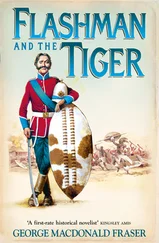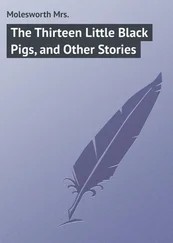The only thing I had to go on was the novel that the article claimed was the centre of everything, and which the caption said had been published earlier that year. But since I was only twenty-five or twenty-six and had read little more than adventure books, Troels Kløvedal’s travel writings, and The Clan of the Cave Bear , the title Conception of the Twentieth Century [1] The English-language version of Høeg’s novel would later be published under the title The History of Danish Dreams .
sounded like it might be heavy-going. So to begin with, I simply tore the page out of the newspaper, folded it up and put it in the back pocket of my sister’s cut-off jeans (which I was wearing, and which she would end up giving me a few years later, because, she said, “Those boxer shorts you go around in aren’t shorts at all, they’re underpants, and I don’t want people seeing me out with a brother in his underpants!”), and after that I leaned back in my seat and looked out through the window at the Danish summer flashing by as I sank deeper and deeper into my own Conception of Peter Høeg .
It wasn’t until a few years later, after I had gone back to the house by the sea and had finally got round to visiting the library in the little town that I discovered Conception of the Twentieth Century on the shelf, alongside the librarian’s recommendation, and borrowed it and took it back home with me to read at once, while lying on the coir mat in the shady living room. After that, everything happened so quickly. I was only six years younger than he, but the only thing I had achieved in my life at that point was… nothing. As soon as Tales of the Night appeared in Arnold Busck’s bookstore, I took it down from the shelf and slipped it inside my anorak and hurried out again, pregnant with significance. I had read neither Márquez nor Karen Blixen, and so I found it to be both brilliant and unique. I enrolled immediately in a drama school in Vordingborg and stole Miss Smilla’s Feeling for Snow from the local bookstore there. At the same time, in a kind of parallel life—or rather two, ten or twenty parallel lives—I was accepted into the School of Journalism, attended ballet lessons at Det Fynske Balletakademi, worked out at the gym, took a course in Spanish, went to Alpe d’Huez to become a skiing instructor, played the flute, toyed with the idea of applying to the Academy of Music, studied psychology at Aarhus University, Spanish at Odense University, played in a local band, took guitar lessons from Svend Staal, practised t’ai chi under the guidance of Tal R, and applied to work on a development project in a village outside Managua in Nicaragua (a motor scooter came with the job), all at the same time . I was everywhere, doing everything I couldn’t, and without success, but most importantly: without meeting him, the revelation around whom my life revolved.
But then at last, one day in the spring of 1993, the twenty lives converged into one:
I step through the door of the meeting room of the Danish Authors’ Society at Strandgade 6, and in the midst of what looks like the entire teeming congregation of Great Authors, along with their mothers and stepchildren and publishers and worst critics, all with wine glasses in hand and faces turned towards the man giving the award speech, there he stands among them, the only person in the room without a wine glass in his hand, seemingly unaffected by all his success and the leading of so many hectic lives in recent years, wearing sandals and airy, loose-fitting cotton trousers that are unrestrictive of the genitals, undamaging to precious eggs, and a casual, unironed, flax-coloured smock, his tousled hair bleached by the sun, his skin golden brown as though, quite unlike any other Great Author, he has not stepped directly from a taxi cab but from a circumnavigating wooden schooner, an engineless vessel that almost silently, with only the gentle glug of water under its stern, slipped into the harbour with the first blush of rising sun to moor at the quayside some fifty metres away behind the Ministry of Foreign Affairs. He stands as one sits, or more exactly stands , in a saddle: back straight, legs apart, knees slightly bent, anus thrust forward into alignment with the spinal column so as to allow the free flow of energy and inspiration and to permit the soul to plume like a flame from arsehole to cosmos. His gaze is intense, almost manically attentive and yet calmly and indulgently directed towards the man who stands only a couple of metres in front of him, mumbling his award speech into an occasionally squealing microphone.
What happened then is something of which I have absolutely no recollection. It’s as if the story grinds to a halt here, the picture freezes, and the only thing I see, and continue to see, as though it were in front of me right now, is the image of him, Peter Høeg, not the congregation of Great Authors, but Peter Høeg, picked out from its midst as though in spite of it, existing in his own dimension, in another world entirely, that of the Conception itself.
And in that world, from that moment on, I am his shadow, or rather his shadows, the countless shadows of Peter Høeg.
I follow his example, doing everything of which I am unable, living nowhere and everywhere at the same time, on a sofa in the broadcasting corporation’s radio documentary department, beneath an overpass north of Marseilles, in the basement of New York’s Grand Central Station, in Joseph London’s front room, with an unmarried female schoolteacher in a suburb of Prague, with a Jewish glassblower and her Uzbek sister-in-law in their apartment on the “island of poets” in St Petersburg, on the floors of a former ice-cream factory in Hanover and a villa in Maisons-Laffitte. On a daybed in the attic of a public transport director in Risskov, I read Borderliners during the course of some nights of despair, a novel I actually purchase (albeit with money borrowed from a biscuit tin in the kitchen of a woman who was out). In it I encounter for the first time the author inside the Conception and for a moment I believe that it really is him, until I am told that things are not that simple. I sigh and read on. I read slowly and attentively, almost manically absorbed, as if I were searching for something. But for what? For Peter Høeg, indeed, but not only for him, which is to say me, and not only for the key to my own life. I am searching for something else, something bigger, a door leading out into another world entirely.
Years pass, I meet the Woman of My Dreams and propose marriage to her, and she accepts, and at the same time The Woman and the Ape is published, she buys it for me as a gift and I read it (as if it were my own), yet I’m no longer quite as certain as before. Nevertheless I carry on, getting up in the mornings, performing my exercises, dancing, practising my t’ai chi, doing my sit-ups and press-ups, and so on. Like him, I am still doing my utmost to do everything under the sun, I really am, only now I no longer know why.
Then all of a sudden, one day he is gone. Vanished! Rumours abound, the way rumours do when a phenomenon such as he disappears from one moment to the next after having been at the centre of everything for seven or eight heightened years, appearing everywhere, in all the media, in everyday conversations, in the reading clubs, bookstores and cinemas, even Hollywood. But the reality of the matter is that no one knows anything. The truth is that Peter Høeg has disappeared, not only from literature but from the world. At first I am puzzled, then increasingly with each passing day I despair, until at once I realize that this is no tragedy: on the contrary, it is the pinnacle of the Conception, the greatest of all strokes of brilliance: overnight, Peter Høeg went from being everything, everywhere and everyone (at the same time), to being nothing, nowhere and no one, vanished and gone.
Читать дальше










